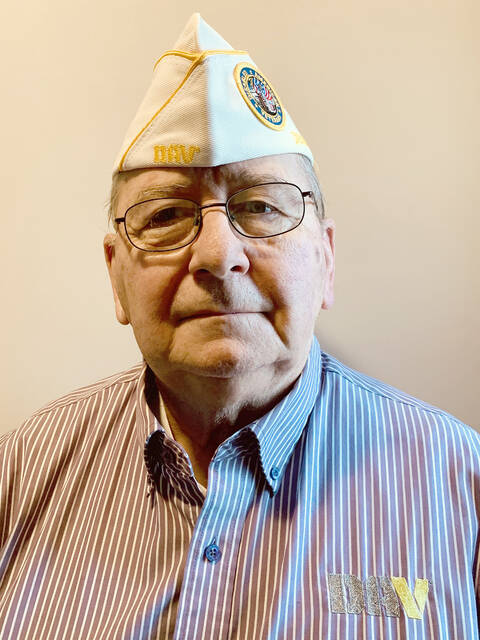On June 12, 2024, the Department of Veterans Affairs (VA) celebrated Women Veterans’ Recognition Day and announced that over 53,000 women veterans had enrolled in the VA Health Care Program over the past year!
This was a twenty (20%) percent increase over the previous year and signifies the largest VA enrollment year for women veterans on record!
Women veterans are currently the VA’s fastest-growing patient population.
According to Clermont County 2023 statistics, there are 927 women veterans residing in the county. There are also 11,495 male veterans living in Clermont County. Of the 12,422 veterans in Clermont County, 3,420 are certified by the VA as being considered as “disabled veterans.”
Throughout Ohio, according to 2023 statistics, there are 52,037 women veterans and 614,283 male veterans for a total of 666,320 veterans.
The VA’s health care enrollment of women veterans increased across all the fifty (50) states with the greatest number of women enrollments in Texas (6,507) and Florida (4,666).
This significant increase is being spearheaded by the PACT Act of 2022, which enabled the VA to deliver needed and record health care and benefits to millions of veterans exposed to toxins while serving in the military.
In 1948, women veterans were finally granted a formal place in our country’s military. “Today, the more than two (2) million women veterans living in the United States make up our fastest growing veteran population,” said VA Deputy Secretary Tanya Bradsher. “It’s important to all of us here at the VA that every woman veteran knows she belongs at VA.”
Currently, at the Cincinnati VA Medical Center (VAMC), and at every VA healthcare system across the nation, there is a Women Veterans Program Manager.
Additional specialized women health care staff include: Women’s Health Medical Directors, Primary Care Providers, Patient Aligned Care Teams, Maternity Care Coordinators and Breast and Cervical Cancer Screening Coordinators.
From 2021 to 2023, the VA has significantly expanded its’ healthcare services dedicated to women veterans’ healthcare services. Specifically, this expansion was for breast cancer screening and mammograms for veterans with potential toxic exposures.
Other areas that health care services expanded were increased access to reproductive health services and expanded maternity care coordination for female veterans, from pregnancy through 12 months post-partum.
All the expansion coincides with the VA’s Equity Action Plan and broader efforts to ensure that every female veteran gets the care and benefits that they have earned through their military service to our country.
In terms of disability compensation benefits, the VA has delivered a record number of benefits, with 717,141 women veterans now receiving financial compensation.
Over the last five (5) years, an additional 197,667 women veterans have begun receiving benefits. This represents a twenty-eight (28%) percent increase.
More than eighty-nine (89%) percent of women veterans, who have applied, have received disability benefits from the VA for at least one condition. On an average, these women veterans have received $27,109 in earned disability compensation benefits per year.
“It’s our goal for every woman veteran to receive all the benefits she has earned, and that includes world-class health care,” said VA Under Secretary for health Shereef Elnahal. “We want women veterans to know that VA has invested in more services for women veterans than ever before.”
My Opinion: I must confess, that we, in the past have let women veterans down. It took the United States until 1948 to grant women veterans a formal place in our country’s military.
Women veterans have served our country with courage and dedication, but their stories of what they experienced on active duty often remain untold. Upon returning to their civilian life, many women veterans grapple with the dual pressures of personal and familial life.
While navigating the complexities of their military experiences, women veterans had to face the previously male-oriented VA system of health care.
The VA is starting to change for the better in its’ medical care and services for women veterans. In 2014, the Disabled American Veterans (DAV) published a Report entitled: Women Veterans: The Long Journey Home.
This report listed twenty-seven (27) key recommendations for the VA to implement and served as a roadmap to support women veterans on their transition to civilian life.
For too long women veterans have remained invisible to the federal and state programs to assist them. This report was designed to “trigger” actions from the VA. The VA has responded and many of the DAV’s Report goals have been implemented. But much more needs to be done!
DAV Chapter #63 (Clermont County) is working with Rick A. Johnson, at the Ft. Thomas Office of the Cincinnati VAMC, to co-sponsor a Women Veterans luncheon and briefing this summer. Previous similar women veterans’ events were sponsored by the DAV in Mt. Orab and Georgetown.
County Veterans Service Commissions and the Ohio Department of Veteran Services must identify women veterans and make them aware of the VA medical care benefits that they have earned.
I was overjoyed in seeing that 53,000 female veterans enrolled in the VA’s healthcare system last year. However, I was disappointed that Ohio’s number of women veterans enrolling was lower than other states.
Every year, the DAV travels to Washington DC to brief our elected leaders on legislative bills impacting women veterans. Congress is listening and bills are being introduced in support of women veterans.
However, WE must do better for our female veterans at the local and state levels! By their past military service, women veterans have earned their medical care benefits!
BioSketch: John Plahovinsak is a retired 32-year Army veteran who served from 1967 to 1999. He is the Disabled American Veterans (DAV) Department of Ohio’s Hospital Chairman and the Adjutant of DAV Chapter #63 (Clermont County). He can be contacted at: [email protected].

